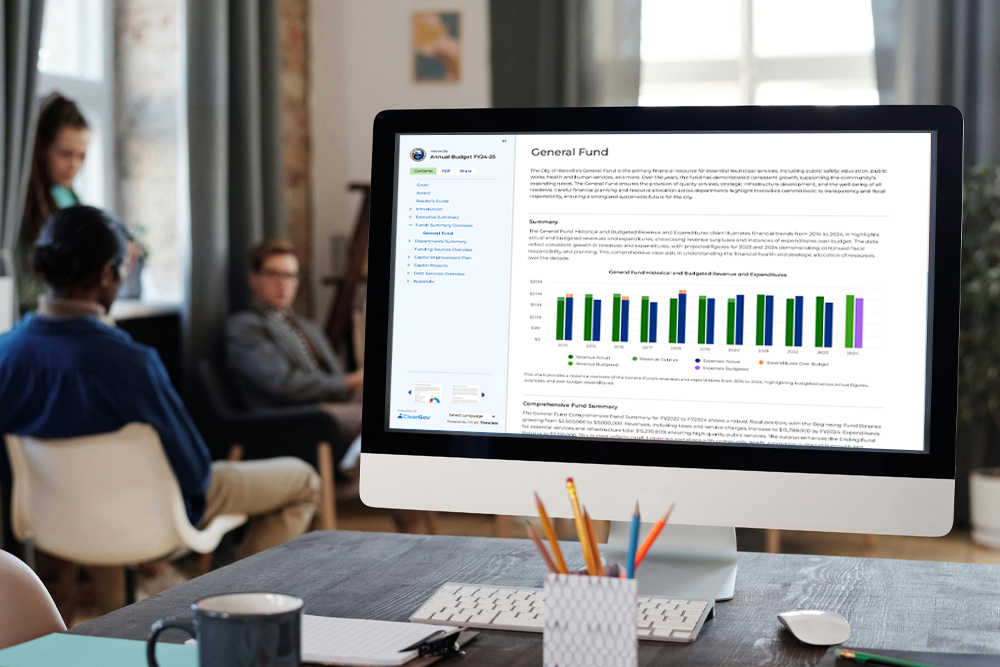The Potential of the Remaining 30% ARPA Fund Obligations for Local Governments With the December 31, 2024 deadline approaching, local governments still have the unique opportunity to obligate their remaining American Rescue Plan Act (ARPA) funds. According to the communities surveyed in the National Association of Counties (NACo) local government ARPA investment tracker, roughly 30% of their funds remain unobligated. This substantial amount of unobligated funding presents both a challenge and an opportunity for local governments across the nation. The Challenges Of Obligating ARPA FundsWhile the The Coronavirus State and Local Fiscal Recovery Funds (SLFRF) program authorized by the American Rescue Plan Act was instrumental in helping local governments recover from the pandemic, governments have faced many obstacles in effectively utilizing these resources. As noted in a Brookings Institution report: “These funds…also created unique tests for local government due to a range of factors: initial uncertainty around Treasury guidelines for the program’s eligible uses; compressed expenditure timelines; a general reluctance to commit funding for operating programs or new staff capacity without future sustainable revenue sources; and a lack of incentives in ARPA’s design for collaboration across jurisdictions or even among local partners.” Despite these challenges, the impact of ARPA funding on communities has been significant. According to UHY Advisors: “While it may seem that the assumptions and challenges with ARPA funding have overshadowed opportunities, the impact on the community has been visible and reported…Showcasing these ARPA-funded projects and programs has resulted in increased local government transparency and outreach to the community. This assures the public that funding measures and outcomes have adequately addressed recovery from the pandemic.” Turning Challenges Into OpportunitiesForward-thinking communities are using ARPA funds to build a better future, not just recover from the past. In its interviews with city and county officials, Brookings Institution found that some local governments are getting creative with their spending plans: “Some counties were able to leverage existing strategic plans and hit the ground running with SLFRF dollars, while others utilized the ARPA moment to generate a strategic plan or spending vision.” By focusing on long-term planning and innovative fiscal strategies, local governments can maximize the impact of these funds beyond immediate recovery needs. ARPA also gives communities a chance to try new things. As one Midwest official said: “ARPA allowed us to experiment. Even if something doesn’t work out perfectly, we’re proud that we tried.” Of course, technology plays a major role in this forward-thinking approach. With better planning and budgeting tools, local governments can make smarter decisions about how to use ARPA funds. Technology As The Engine Of RecoveryAs local governments navigate ARPA spending, the right technology can support both immediate recovery and long-term growth. According to the SLFRF Final Rule, governments are eligible to use funds for technology-related “government services:” “Technology infrastructure to improve access to and the user experience of government IT systems, as well as technology improvements to increase public access and delivery of government programs and services.” These tech investments do more than just patch up current systems. They set the stage for future success through:
Local Governments Leading The ChargeAcross the country, local governments are using ARPA funds to invest in digital transformation and system modernization to enhance efficiency and transparency.. Here are a few examples:
Several local governments have used ARPA funds to invest in ClearGov’s software solutions, enhancing their budgeting, strategic planning, and transparency processes. These investments varied from one-year subscriptions to multi-year contracts, including renewals of existing services. Notable examples include Granby, CT; North Andover, MA; Centre County, PA; Mukilteo, WA; and Clinton County, NY. While many local governments have already taken advantage of ARPA funds for technological improvements, others may be hesitating or facing internal red tape. If you’re part of a finance team looking to make a case for investing in technology like ClearGov, it is possible to get the funds obligated before the December 31, 2024 deadline. Making The Case To Your Buying GroupThe slow buying process has been a significant challenge for local governments in utilizing ARPA funds. As noted by Brookings Institution: “Opportunity is knocking at the door, yet most local governments are struggling to seize the moment. Challenges include a lack of organizational capacity, legal uncertainty, political complexity, and more. A resulting “go-slow” approach is sensible if used to identify goals, shape meaningful investments, engage stakeholders, and align funders. Unfortunately, too few places are proceeding with the necessary urgency and organizational rigor.” To overcome this hurdle and make a compelling case for investment in technology, finance staff can use the following approach: Create A Sense Of Urgency Emphasize that ARPA funds are essentially “found money” that must be obligated by the end of the year. This is a one-in-a-generation opportunity that won’t come again. Stress the importance of acting now to avoid leaving these funds on the table and missing out on potential improvements to your community. Highlight Long-Term Benefits Discuss the long-term advantages of technology investments that go beyond immediate recovery. For example, new software can lead to significant time and resource savings, improved accuracy in financial planning and reporting, and better decision-making. Additionally, technology investments can support community growth by fostering transparency and accountability and increased public trust and civic engagement. Demonstrate Support For Finance And Other Departments Explain how new technology can streamline budgeting and planning processes across the entire organization. Modern tools can significantly improve efficiency and support better collaboration between the finance team and departments. Software also eliminates many manual, tedious processes these teams are traditionally tasked with, freeing up staff time to focus on more strategic aspects of the budget. Showcase Cleargov’s User-Friendly Features ClearGov offers a range of benefits that make it an ideal choice for local governments. The easy onboarding process requires no IT involvement, which reduces strain on often-overloaded tech teams. As a standalone system, it doesn’t need complex integration with other systems, which simplifies implementation. ClearGov provides dedicated customer success and data teams for ongoing support, and the intuitive interface is easy for staff to learn and use, minimizing training time. However, comprehensive training opportunities are always available to help your team make the most of the software. By presenting these points, you can make a strong case for investing in technology like ClearGov using ARPA funds well before the December 31, 2024 deadline. This approach not only addresses immediate needs but also positions your local government for long-term success in serving your community. |












